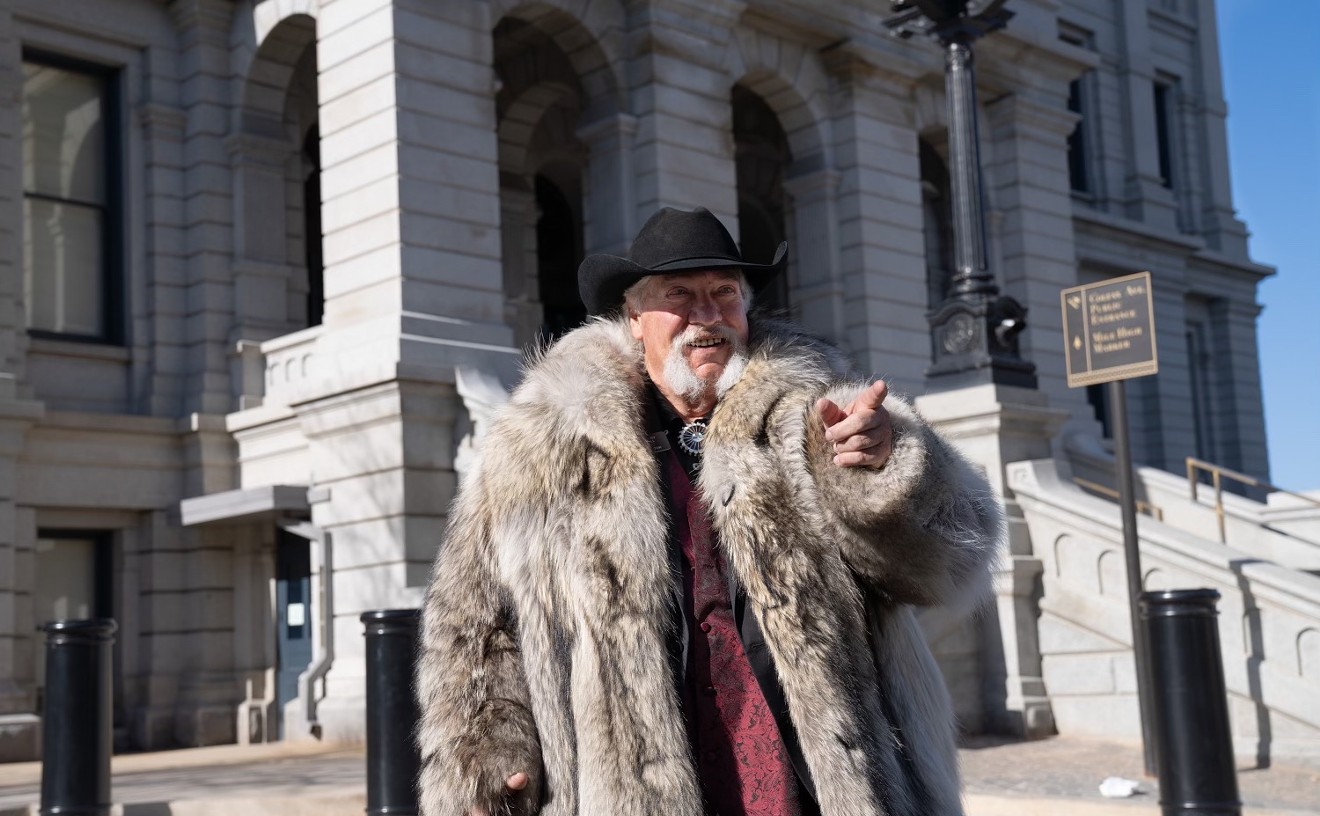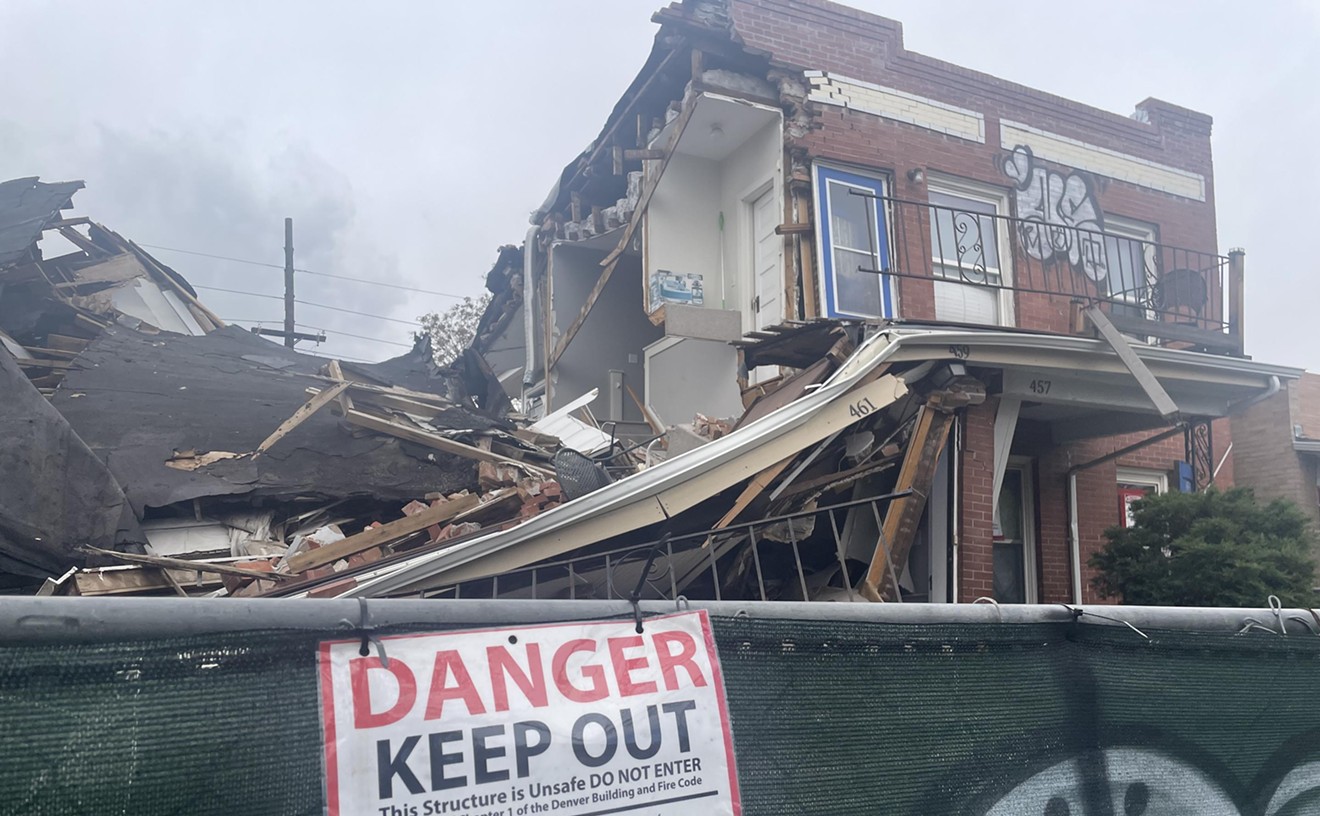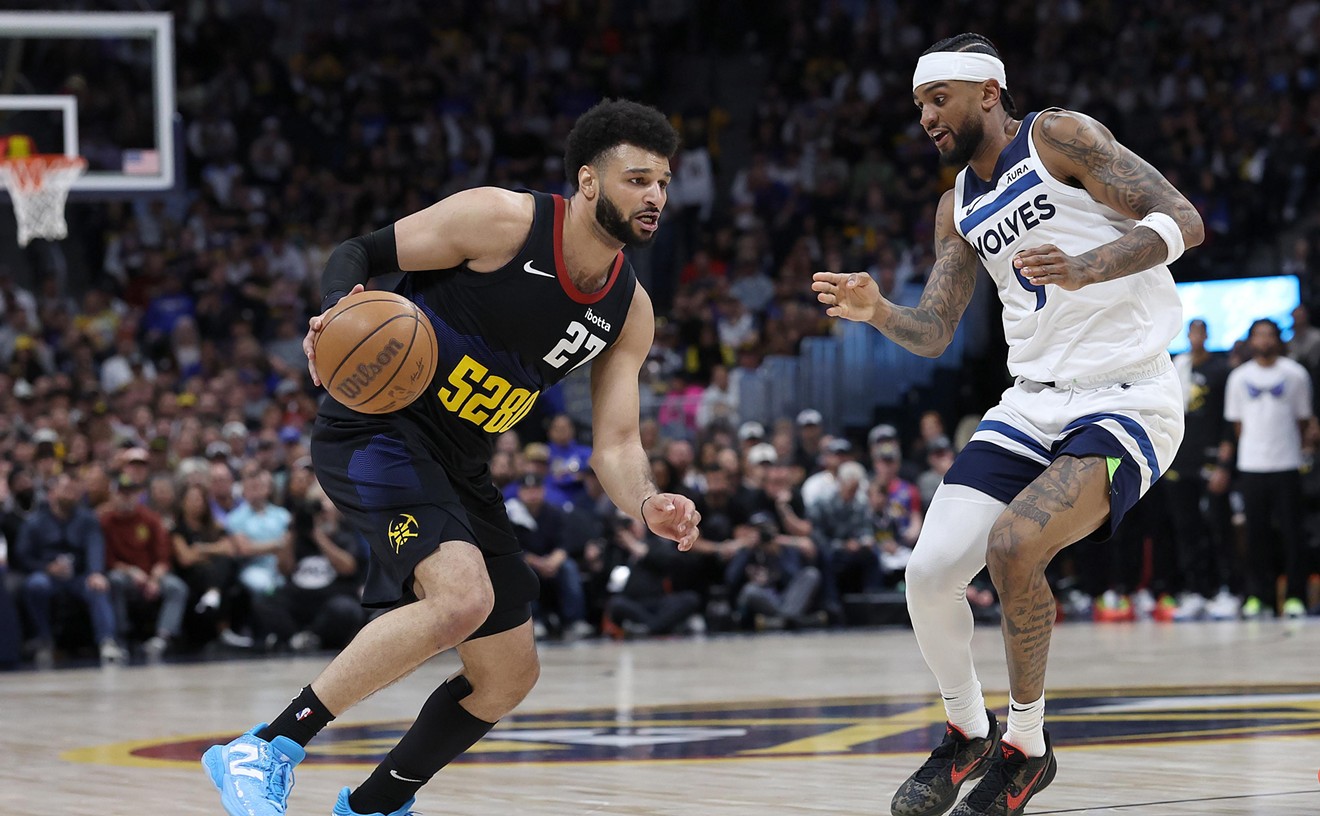The exhibit devoted to the November 1864 massacre of 150 people in a peaceful camp on Sand Creek -- most of them women, children and the elderly -- was considered one of the core "Colorado Stories" components when the History Colorado Center opened in April 2012. But tribal members weren't the only ones who had trouble with Collision: Historians complained about not just the exhibit's content, but its Disneyfied style from the start.
Although for months History Colorado resisted any attempts to close the display, this past April History Colorado head Ed Nichols finally sent a letter to the Northern Cheyenne and other tribal representatives, agreeing to close the exhibit during a consultation that would be facilitated by the Colorado Commission of Indian Affairs. Troy Eid, the former U.S. Attorney for Colorado, was chosen to mediate the meeting between History Colorado and official representatives of the Northern Cheyenne of Montana, the Northern Arapaho of Wyoming, and the Cheyenne and Arapahoe tribes of Oklahoma.
Those tribes lived in Colorado, before the Sand Creek Massacre cut them off from their homes, their culture. "What happened at Sand Creek, you had leadership of very prominent nations completely destroyed, then exiled and never allowed to recover," says Eid. "Sand Creek is with us now the way it was with us in the past. It's central to everything that happens to Colorado today, in our daily lives."
And so the initial consultation involved much more than just the contents of a single exhibit -- although the exhibit was certainly part of the discussion. At the end of the first day, the group toured the now-closed Collision, with the tribal representatives -- many of whom had not yet seen it -- "correcting errors and otherwise expressing their views on the exhibit," says Eid. Although much of the conversation during the consultation remains confidential, he does note that "there will be some changes in the exhibit."There will also be changes in the relationship between the tribes and History Colorado, as well as other state officials. "The parties want to define the relationship. They want a permanent relationship," says Eid. "My message to the tribes, and to State of Colorado officials, is that they really need to build this relationship, and they need to work together."
The two days of meetings at the History Colorado Center were a start. The next step is to put together a memorandum of understanding between the tribes, History Colorado and the state, much like what the tribes have with the federal government regarding the establishment of the Sand Creek Massacre National Monument over a decade ago. But the fact that there will be a next step is significant progress. "It was a very different meeting at the end than it was at the start," says Eid. "They all were encouraged by what happened."
Here's the joint statement released yesterday on the Tribal Consultation regarding the Sand Creek Massacre Exhibit at History Colorado:
DENVER -- Wednesday, June 19, 2013 -- A Tribal consultation convened with the assistance of the Colorado Commission of Indian Affairs at History Colorado, June 18-19, 2013, where official Tribal representatives from the Northern Cheyenne of Montana, the Northern Arapaho of Wyoming and the Cheyenne and Arapaho Tribes of Oklahoma, along with National Park Service Sand Creek Massacre National Historic Site and History Colorado officials, reviewed the History Colorado Center exhibit about the Sand Creek Massacre.More from the Calhoun: Wake-Up Call archive: "A century and a half later, the wounds of Sand Creek are still fresh.""The purpose of the Tribal consultation was to begin addressing concerns from the Tribes regarding the exhibit, as well as develop a plan for future relations between History Colorado and the Tribes. All of the participants agreed that this was an encouraging and productive meeting," said Denver attorney Troy Eid, who mediated the consultation. Eid donated his time as a public service.
Participants agreed to meet again later this summer for further consultations regarding the exhibit and that the exhibit will remain closed during these ongoing Tribal consultations. The parties are also developing a joint Memorandum of Understanding (MOU) to guide their current and future relations. The purpose of the MOU will be to educate the public about the Cheyenne and Arapaho people and the Sand Creek Massacre and to prevent such tragedies from ever happening again.











